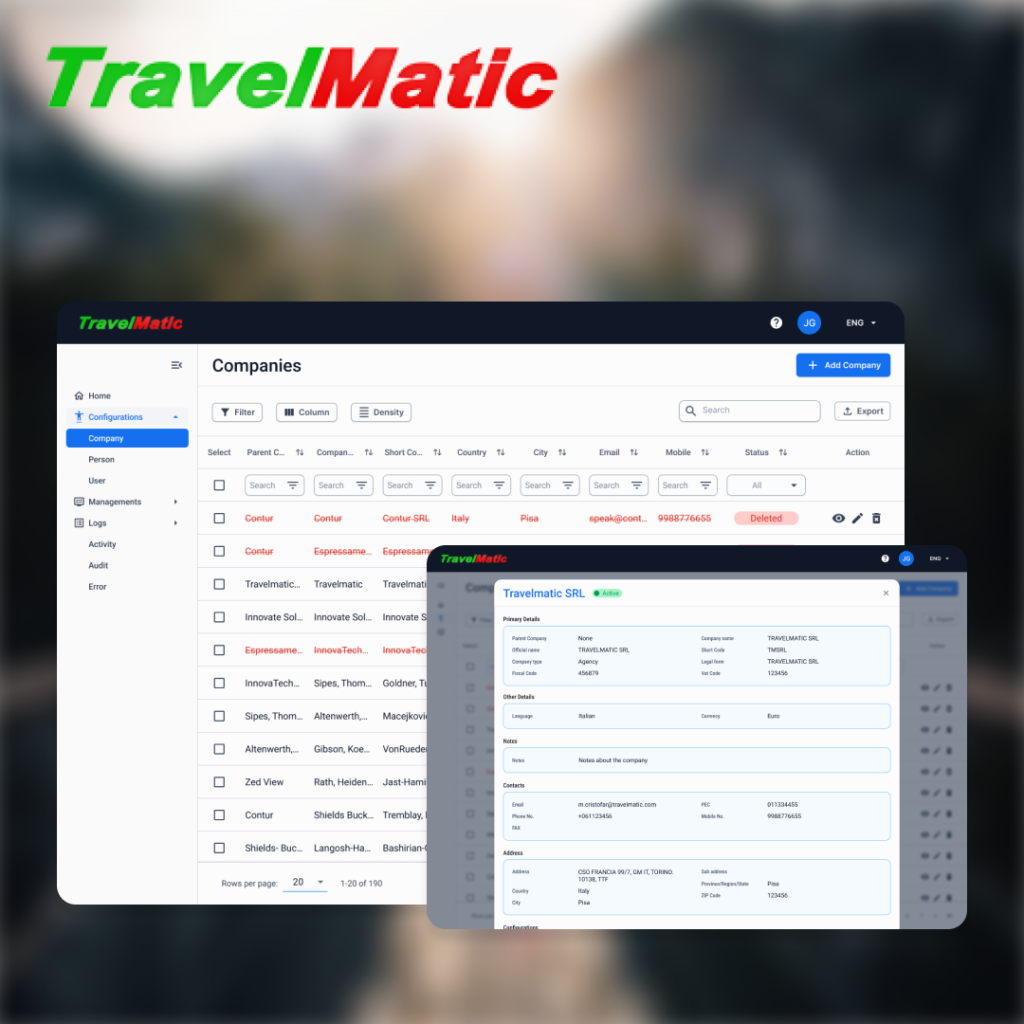Travel Matic Travel App
A detailed insights of how we excelled in every industry by delivering what we promised to our clients. A section wise description of how we did it so you can do it too.

About
Ten years later, in 2010, TravelMatic unveiled SimpleCRS, a bespoke platform tailored to the shifting demands of the travel industry. Recognizing the necessity for increased versatility, they
concentrated on expanding their user base by providing a solution that could accommodate a
wider array of needs.
SimpleCRS catered not only to large corporations but also to small and medium-sized
businesses and travel agencies. Their focus on seamless supplier interaction made them a hit.
Today, they boast over 1 million active B2B users, solidifying their position as Italy’s biggest and
Europe’s second-largest provider in the B2B travel space.
What problems they were facing
- The use of antiquated technologies by both TravelMatic & SimpleCRS makes innovation and maintenance difficult
- Being the market leader, it was critical for the them to remain competitive given the changing demands of its clientele and the rapid evolution of technology.
- User feedback emphasized the need for enhancements to both systems' architecture, infrastructure, and management.
- Scalability becomes an issue when the user base grows, requiring a strong & reliable infrastructure that can handle higher demand.
Solutions we offered
TravelMatic found themselves like a successful athlete using outdated equipment. They were winning, but just scared to be taken over by competitors. They knew they needed to change, but what? That’s where we came in. We sat down with TravelMatic and really listened.
Once we had a clear understanding, we knew what we had to do. We needed to give TravelMatic a complete makeover – a digital upgrade! We replaced their old system, this would ensure they
could stay ahead of the game for years to come, just like a pro athlete with the latest gear.
But before we started building, we did our homework. We spent three months researching the
market, just like an explorer charting a new course. This helped us figure out the best way to
approach the upgrade and design a roadmap for success.
So, that’s the story of how we helped TravelMatic get ready for the future. We listened, planned,
and upgraded, and now they’re ready to take on the next two decades with confidence!
Architectural Plan
- The system was build over 20 years old monolithic architecture which made the system updates restrictive and time-consuming.
- By transitioning their legacy monolithic architecture to a microservices-based approach, we facilitated significant improvements in scalability, deployment speed, and costeffectiveness.
- With a user-centric approach at the core, we designed the new system's interface with modern elements, utilizing the Material-UI framework.
- To ensure a more maintainable system, we employed a 'no-hardcoding approach, simplifying future updates and reducing the resources required for code modifications and new screen development.
- The development process adopted an Agile methodology, promoting iterative development and rapid response to changing requirements.
Technical Approach
- Created new user flows, Information Architectures and UI designs for their new system in Figma.
- Developed the Web Application in React.JS for desktop and tablets.
- Development of Mobile Applications for Android and iOS platforms using React Native.
- Laravel and Python framework were used for the back-end operations.
- Usage of MySQL and Mongo DB for database management
- Implemented container based task management and its automation using Kubernetes.
Team
A Team of 17 transformers .
- Solution Architect
- Technical Project Manager
- 1 UX/UI Designer
- 2 QA Engineers
- 2 Python(Django) Developers
- Team Lead (Backend)
- Team Lead (Backend)
- Team Lead (Frontend)
- 3 Laravel Developers
- 3 React.JS Developers
- 2 React Native Developers
Results
- Upgraded infrastructure allowed the System to handle increased demands more effectively.
- The system seamlessly scaled to handle millions of users and records, accommodating a growing user base.
- For the first time ever, users can now access the tool with unparalleled convenience thanks to the mobile app.
- Simple CRS saw a 20% growth in turnover the following year, thanks in part to a focus on enhancing user experience and system architecture.
- Achieved customer satisfaction and retained the monopoly in Italian market.